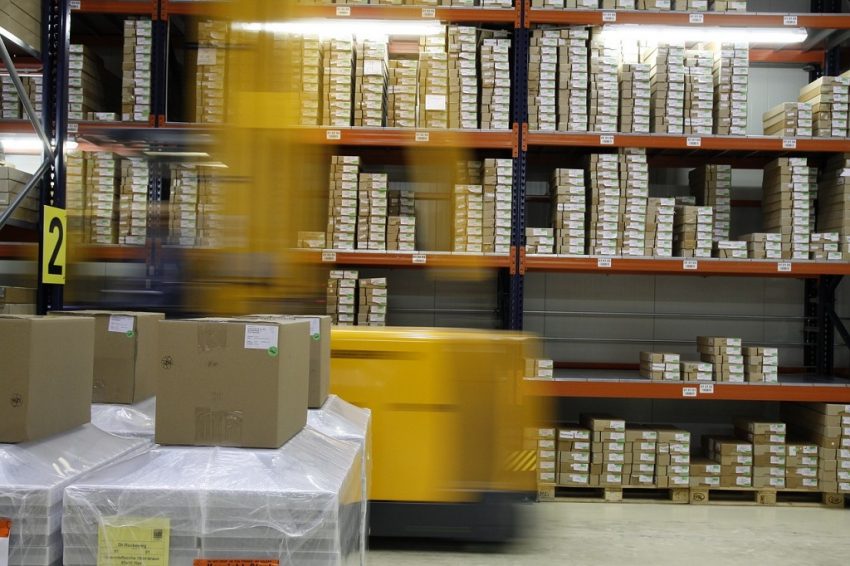How to Avoid Overspending When Growing a Warehouse Business


- Implement a structured budget to manage expenses and avoid overspending in warehouse business growth.
- Consider leasing equipment and machinery, which reduces upfront costs and increases operational flexibility.
- Optimize warehouse processes, implement energy-saving measures, and train employees in cost-saving measures.
- Employ strategic hiring practices and outsource certain tasks to manage labor expenses effectively.
- Plan long-term investments carefully, balancing immediate needs with future business growth and sustainability.
Running a successful warehouse business requires strategic planning, careful decision-making, and impeccable attention to detail. Especially in advanced countries like Singapore and the United States, where the warehouse industry is highly competitive and constantly evolving, business owners must stay updated with the latest trends and technologies to remain profitable.
One of warehouse business owners’ biggest challenges is managing expenses and avoiding overspending. Overspending can quickly drain the finances of a business and make it difficult for it to grow and remain profitable. As a warehouse business owner, you must know how to avoid overspending when growing your business. This post will share some tips on how to do just that.
Create a budget and stick to it.
When growing your warehouse business, having a well-defined budget that covers all your expenses is important. This should include everything from equipment purchases to employee salaries. Once you have created a budget, make sure you stick to it. This means avoiding impulse purchases, monitoring expenses carefully, and keeping track of all your income and expenditures. Of course, emergencies or unforeseen expenses may arise, but having a budget in place can help you make informed decisions on how to handle them without overspending.

Lease equipment instead of buying it.
Growing your warehouse business can require significant investments in equipment and machinery. Instead of buying these items outright, consider leasing them instead. Leasing allows you to pay for equipment in installments over time, which can help to reduce your upfront costs. Additionally, leasing equipment also provides flexibility- you can upgrade your machinery later on if you need to.
For example, smaller warehouse businesses can benefit from renting material handling equipment. A forklift rental can provide a cost-effective solution for handling heavy loads without investing in purchasing a forklift outright. Plus, when you lease equipment, the maintenance and repair costs are often included, saving you even more money in the long run. This allows you to save money and allocate resources towards other areas of your operations.
Use efficient and cost-effective processes.
The processes you use in your warehouse can greatly impact your bottom line. One way to avoid overspending is to look for ways to optimize your processes and reduce costs. This could include the following:
Streamlining your workflow
If you haven’t already, take the time to analyze your warehouse workflow and identify areas where there may be bottlenecks or inefficiencies. Look for ways to streamline your processes and eliminate any unnecessary steps or tasks. For example, implementing a warehouse management system can help to automate processes and improve overall efficiency.
Implementing energy-saving measures
Energy costs can quickly add up in a warehouse setting, especially if you have large spaces to light and cool. Consider implementing energy-saving measures such as switching to LED lighting or using automated systems for temperature control. These small changes can lead to significant cost savings over time.
Training employees on cost-saving measures
Your employees play a crucial role in the success of your warehouse business. Make sure to train them on best practices for reducing costs, such as proper inventory management and efficient use of equipment. Encourage them to bring forth ideas for improving processes and saving money- after all, they are the ones working on the front lines and may have valuable insights on how to improve operations.
Outsourcing certain tasks
Outsourcing tasks such as packaging and shipping can help you save money on labor costs, especially during peak seasons. You can also consider outsourcing maintenance and repair services for your equipment instead of hiring an in-house team. This can be a more cost-effective option, depending on the size of your business.

Hire strategically.
When growing your warehouse business, it can be tempting to hire more employees than you need to. However, overstaffing can quickly become an expensive mistake. Instead, focus on hiring strategically. This means only hiring employees necessary to meet your goals and objectives. Additionally, consider outsourcing specific tasks to contractors or consultants if it makes sense financially.
Plan for the future.
Finally, one of the most important things you can do to avoid overspending is to plan for the future. This means taking a long-term view of your business and making investments that will pay off in the long run. For example, investing in employee training can help you build a more knowledgeable and efficient workforce that can help your warehouse business grow and thrive.
Growing a warehouse business is an exciting and challenging process. However, overspending can quickly derail your plans and jeopardize your business financially. By following these tips, you can avoid overspending and build a warehouse business that is profitable, efficient, and sustainable in the long run. Remember to always keep an eye on your budget, optimize processes, and make strategic decisions for the future growth of your business. With diligence and careful planning, you can successfully navigate the competitive world of warehouse management and achieve long-term success.


